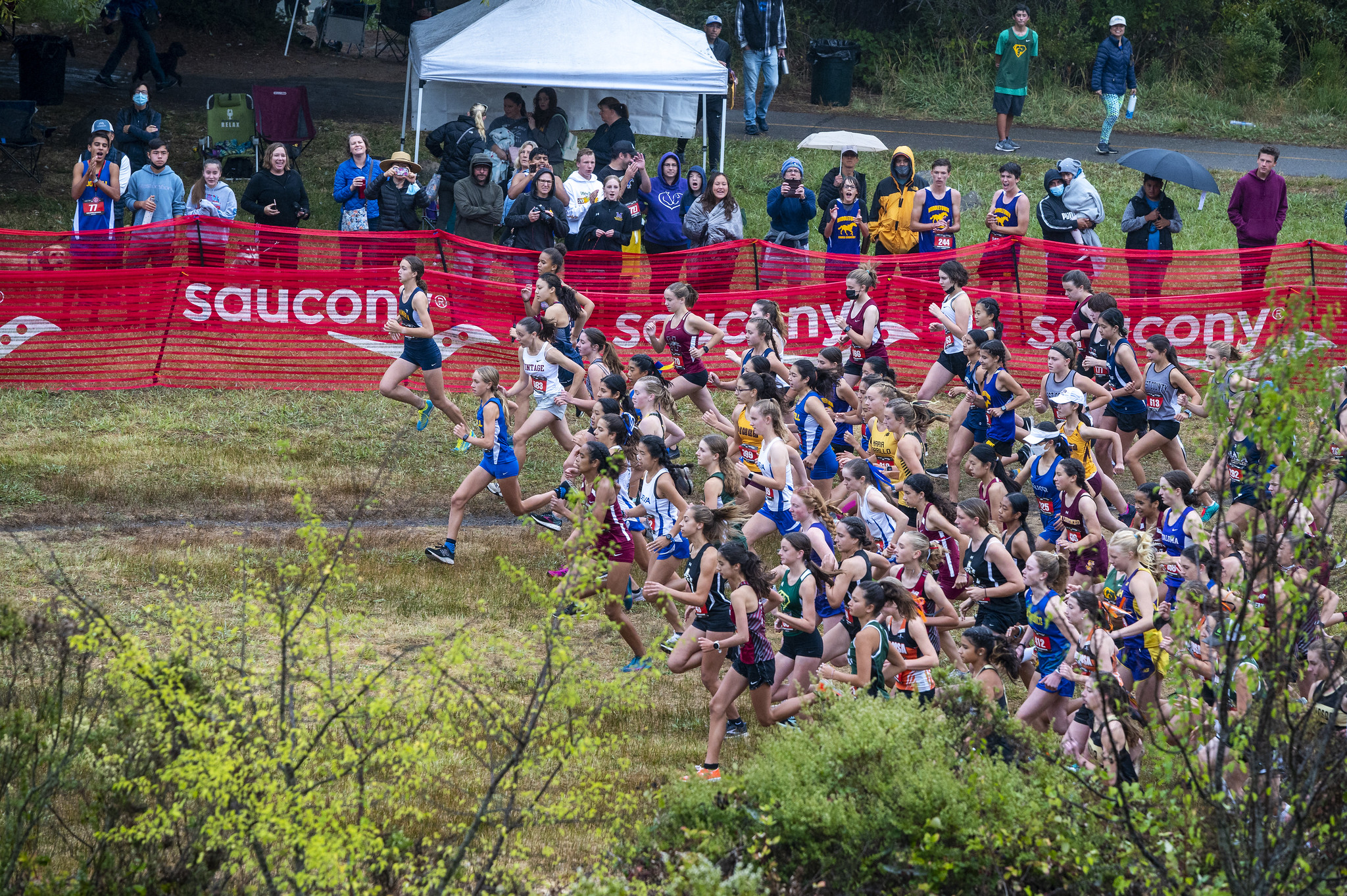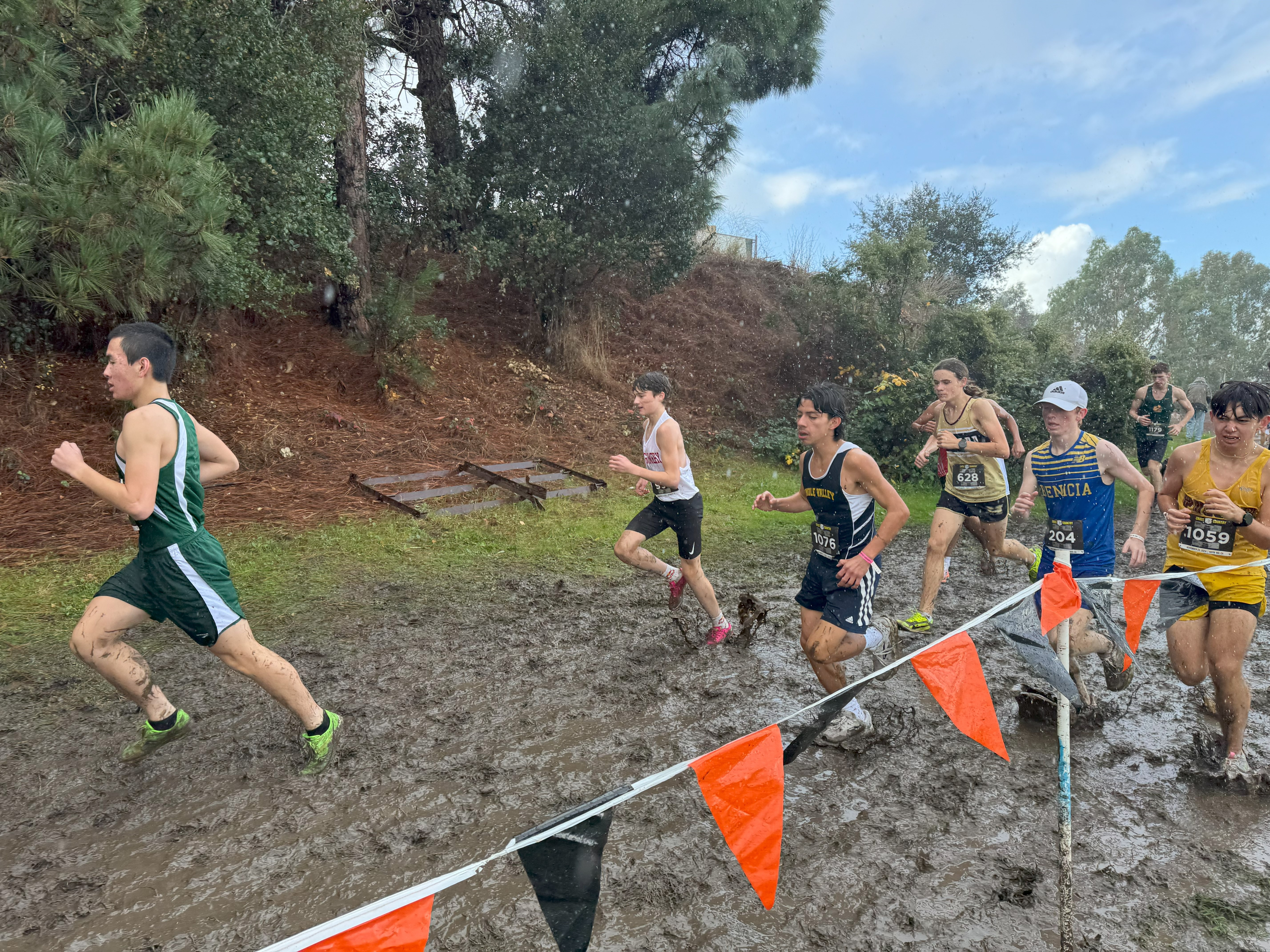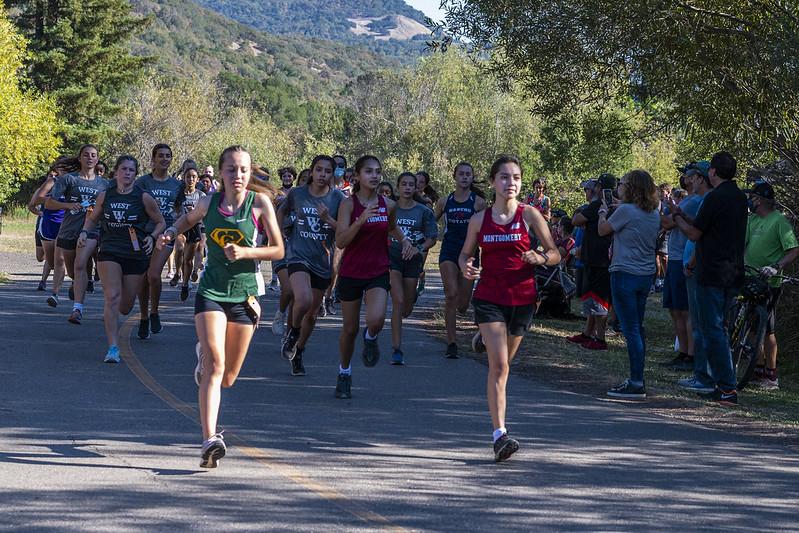Cross Country 101
A Guide for Parents & Guardians of Montgomery High School Cross Country
Welcome to Montgomery High School Cross Country! Whether this is your first season or you’re a returning family, this guide is designed to help you understand the basics of the sport, how our team operates, and how you can best support your runner.

What is Cross Country?
- Cross country (XC) is a fall distance-running sport where athletes race over natural terrain—grass, dirt, trails, and sometimes hills.
- Race distances: Most high school races are 2 miles to 5km.
- Team scoring: Races are scored by adding the finishing places of the top five runners on each team. The lowest score wins. (Ex: 1st + 3rd + 7th + 12th + 20th = 43 points). The 6th and 7th runners can 'displace' other teams’ scorers, making every athlete important.
- Seasons: Typically August–November, with league, regional, and state championship meets capping the season.
Training & Practice
- Daily practices: Usually after school; include warm-ups, workouts (easy runs, intervals, long runs), strength work, and cooldown.
- Rest & recovery: Sleep, nutrition, and easy days are as important as the workouts themselves.
Important Nutrition Notes
- Fuel before practice: A light snack 1–2 hours before (banana, granola bar, toast with peanut butter) helps energy levels.
- Hydration matters: Encourage water throughout the day, not just right before practice. Sports drinks are only needed on very hot days or after especially long/hard workouts.
- Post-practice recovery: Athletes should aim to eat within 30–60 minutes of finishing practice — ideally a mix of carbohydrates (to refuel) and protein (to repair muscles). Examples: chocolate milk, yogurt with fruit, turkey sandwich.
- Balanced meals: Consistent meals with fruits, vegetables, lean protein, whole grains, and healthy fats help athletes stay healthy and energized.
- Avoid energy drinks & soda: These can dehydrate and don’t provide sustainable energy.

Meets (Races)
- Schedule: The full meet schedule can be found on our team website: Viking XC Meet Schedule. Some meets are Varsity-only or JV-only. Coaches will let families know at least two weeks in advance who is racing.
- Transportation: Coaches are not permitted to arrange carpools for practices or meets. However, parents may coordinate with one another. A Google Sheet (organized by Mary) is available for families who would like to coordinate rides.
- Arrival times: Each meet has specific check-in and warm-up needs. These will always be shared in the weekly Sunday newsletter. Please check carefully for athlete arrival times and plan accordingly.
- Course setup: Races are on loops or out-and-back courses with marked paths. Spectators usually walk to different viewing spots to cheer.
- What to bring: Uniform, racing shoes, water, healthy snacks, warm clothes, and sometimes folding chairs or blankets for downtime.
How Parents Can Support
- Encourage consistency – Remind your runner that showing up to practice every day matters.
- Prioritize rest & nutrition – Sleep, hydration, and healthy meals fuel performance.
- Be positive – Focus on effort, teamwork, and improvement rather than times or places.
- Volunteer – Help with snacks, course support, or organizing team events.
- Cheer loudly – Runners often say a familiar voice in the middle of the course gives them a big boost.
- Stay informed – Read the weekly Sunday newsletter (posted at The Running Vikings) for schedules, updates, and important reminders.

Common Cross Country Lingo
- PR: Personal Record (fastest time ever).
- Splits: Times for each mile (or segment) of a race.
- Pack running: Team strategy where athletes run together.
- Threshold/tempo run: A steady workout just below race pace.
- Long run: The weekly cornerstone run that builds endurance.
Common Running Terms
- Warm-up / Cool-down – Easy running before and after workouts or races to prepare the body and aid recovery.
- Stride-outs (strides) – Short, fast accelerations (about 80–100 meters) used to improve running form and leg turnover.
- Intervals – Repeated fast runs (e.g., 400m or 800m) with short rests in between to build speed and stamina.
- Tempo Run (Threshold) – A steady, comfortably-hard pace (just slower than race pace).
- Long Run – The longest run of the week, essential for building endurance.
- Fartlek – 'Speed play' in Swedish; unstructured intervals of faster running mixed into an easy run.
- Recovery Run – A slow, easy run meant to help the body bounce back.
- Negative Split – Running the second half of a race faster than the first half.
- Kick – The finishing sprint at the end of a race.
- Cadence / Turnover – The rhythm or steps per minute while running.
- RPE (Rate of Perceived Effort) – A scale (1–10) runners use to judge how hard they’re working.
Keys to a Great Season
- Communication – Let the coaches know about injuries, illnesses, or schedule conflicts.
- Patience – Distance running is about gradual improvement.
- Community – Cross country is a family; everyone supports one another.
- Culture – Effort, humility, and teamwork matter more than medals.
Final Note
Cross country is unique because it teaches resilience, teamwork, and self-discipline. Your support as parents and guardians helps athletes not only run faster, but also grow as people. Thank you for being part of Montgomery High School Cross Country!
Download this guide as a PDF.

|
cross_country_101.pdf Size : 25.114 Kb Type : pdf |